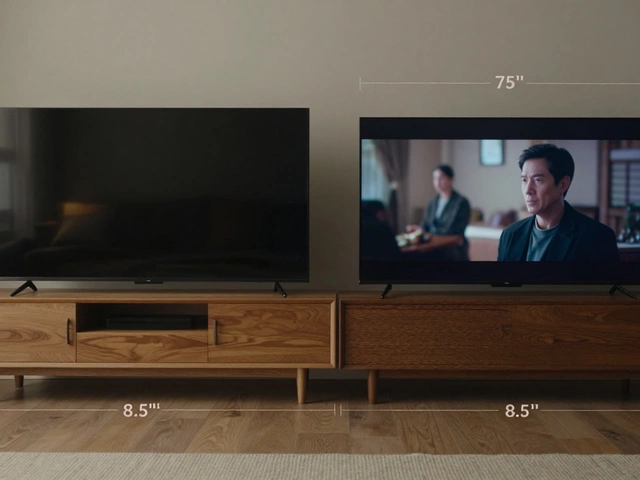TV Stand Setup: How to Pick, Place, and Style Your Stand
Getting your TV on the right stand can change how your whole room feels. A good stand keeps the screen at eye level, hides cables, and matches your décor. Below you’ll get straight‑forward advice on size, placement, and styling, so you can set up a stand that looks great and works even better.
Pick the Right Size and Style
First, measure your TV’s width. A safe rule is to choose a stand that’s at least two inches wider on each side. That gives the TV room to breathe and stops it from looking cramped. If you have a 65‑inch screen, a stand 60‑inch wide or more works fine; most stands list the exact width they support.
Next, think about the stand’s height. Ideally, the screen’s centre should be about 42‑47 inches from the floor. Stand height plus the TV’s half‑height should land in that range. Many stands come in 20‑30 inch heights, so pick one that lands you in the sweet spot.
Style matters, too. Wooden stands bring warmth, metal gives an industrial vibe, and glass looks sleek. Match the material to the other furniture in the room. If your bedroom has a dark wood bed frame, a matching wooden stand will feel cohesive. If you prefer a lighter look, a white lacquered stand can brighten the space.
Position for Comfort and Safety
Where you put the stand matters for both viewing comfort and safety. Keep the stand at least a foot away from any windows to avoid glare. If you’re mounting the TV on a wall, the stand can still hold speakers, game consoles, and cable boxes while keeping the floor tidy.
Check the wall behind the stand. It should be solid—not just drywall—if you plan to bolt the stand into place. Use a stud finder and lag bolts for a secure anchor. This prevents wobbling when you reach for a remote or adjust the TV.
Don’t forget cable management. Most stands have built‑in holes or channels. Run power cords, HDMI cables, and speaker wires through these paths to keep the floor clean. If the stand lacks a hole, you can drill one yourself; just make sure it lines up with the TV’s back panel.
Finally, think about airflow. TVs generate heat, especially larger models. Leave at least two inches of space behind the TV for ventilation. A stand with open shelving behind the screen helps air move freely and reduces the risk of overheating.
With the right size, style, and placement, your TV stand becomes more than a piece of furniture—it turns into a functional centerpiece that makes movie nights, gaming sessions, and everyday TV watching more enjoyable.
Wall-Mounted vs. Stand: Best TV Setup for Your Space
Deciding whether a TV is better on a wall or a stand involves several considerations, from room layout and aesthetics to safety and equipment needs. Wall mounts can save space and offer modern appeal, while stands provide flexibility and easier access. This article explores the advantages and downsides of each option, offers helpful tips for installation, and helps you determine which setup will maximize your viewing experience and complement your home decor.







